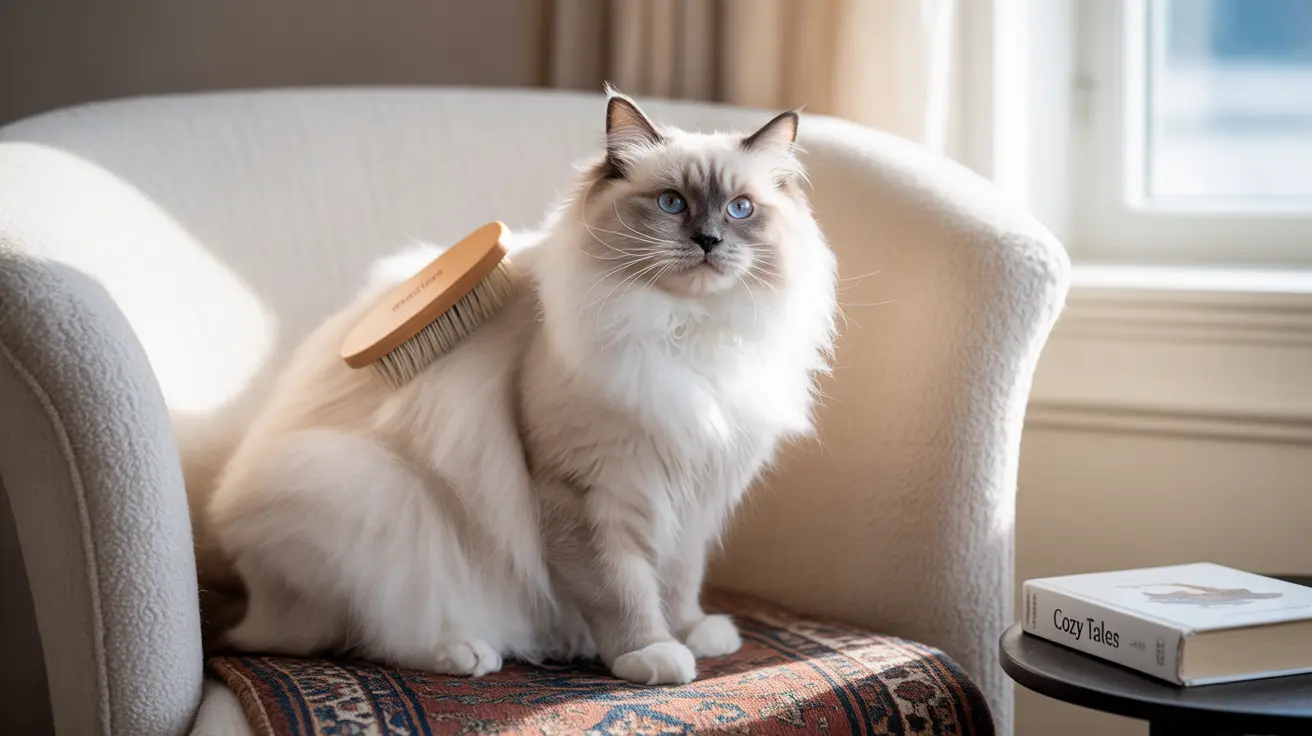Considering adding a Ragdoll cat to your family? These stunning felines, known for their striking blue eyes and color-point coats, often raise questions about their maintenance requirements. Let's dive into what it really takes to care for a Ragdoll cat and determine whether they truly deserve the "high-maintenance" label.
While Ragdolls do require consistent care in certain areas, particularly grooming and companionship, their overall maintenance needs might surprise you. Understanding these requirements can help you make an informed decision about whether this breed matches your lifestyle.
Grooming Requirements: What to Expect
Ragdolls possess a luxurious semi-long coat that requires regular attention. Unlike some long-haired breeds, they lack a dense undercoat, which makes grooming somewhat easier. However, consistent maintenance is still essential.
A proper grooming routine should include:
- Brushing 2-3 times per week (minimum)
- Special attention to prone-to-mat areas like armpits and hindquarters
- Regular nail trimming and ear cleaning
- Occasional bathing (every 2-3 months)
Managing the Ragdoll's Coat
While their coat doesn't mat as easily as some other long-haired breeds, regular brushing sessions are crucial. Using the right tools, such as a steel comb and soft-bristled brush, can make the process more effective and enjoyable for both you and your cat.
Social Needs and Emotional Care
Ragdolls are known for their exceptionally social nature, earning them the nickname "puppy cats." These gentle giants crave human interaction and can become stressed when left alone for extended periods.
Daily Interaction Requirements
- Quality playtime (15-30 minutes minimum)
- Regular cuddle sessions
- Interactive toys and enrichment activities
- Companionship during daily activities
Health Considerations
While generally healthy, Ragdolls have some specific health needs that require attention:
- Regular veterinary check-ups
- Dental hygiene maintenance
- Weight management (they're prone to obesity)
- Monitoring for breed-specific health issues
Dietary Needs
Ragdolls often have sensitive digestive systems and require high-quality nutrition. Premium cat food formulated for long-haired breeds can help maintain their coat health and overall well-being.
Living Environment Setup
Creating an appropriate living space for your Ragdoll includes:
- Multiple comfortable resting areas
- Clean, accessible litter boxes
- Scratching posts and climbing structures
- Fresh water sources throughout the home
Cost Considerations
The financial aspect of Ragdoll ownership includes:
- Premium food suitable for their sensitive digestion
- Regular grooming supplies
- Veterinary care and preventive treatments
- Quality cat furniture and enrichment items
Frequently Asked Questions
How often should I brush my Ragdoll cat to prevent matting and reduce shedding?
Brush your Ragdoll at least 2-3 times per week, though daily brushing is ideal during shedding seasons. Use a combination of a steel comb and soft brush for best results.
Are Ragdoll cats considered high maintenance in terms of grooming and social needs?
While Ragdolls require regular grooming and significant social interaction, they're moderate in overall maintenance compared to some other breeds. Their grooming needs are manageable with routine care, and their social requirements are offset by their gentle, easy-going temperaments.
What are the best tools and techniques for grooming a Ragdoll's long coat safely?
Use a steel comb for detangling, followed by a soft-bristled brush. Start from the head and work your way down, being gentle around sensitive areas. Pay special attention to the belly, chest, and behind the ears.
Do Ragdoll cats require special diets due to sensitive stomachs or shedding concerns?
Many Ragdolls benefit from premium cat food formulated for long-haired breeds or sensitive stomachs. High-quality protein and fatty acids can help maintain coat health and minimize digestive issues.
How much daily companionship and playtime does a Ragdoll cat need to stay happy?
Ragdolls need at least 15-30 minutes of dedicated playtime daily, plus regular interaction throughout the day. They don't do well when left alone for extended periods and thrive on human companionship.
Conclusion
While Ragdoll cats do require consistent grooming and significant social interaction, they're not necessarily high-maintenance when compared to other breeds. Their gentle temperament, adaptability, and relatively straightforward care requirements make them manageable for most dedicated cat owners. The key is establishing regular routines for grooming and ensuring you can meet their need for companionship.






